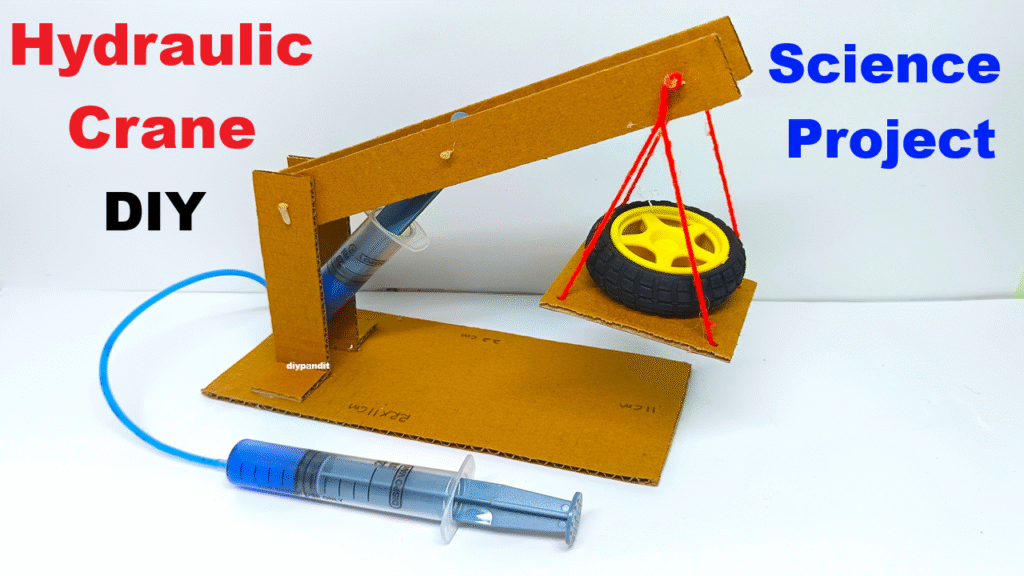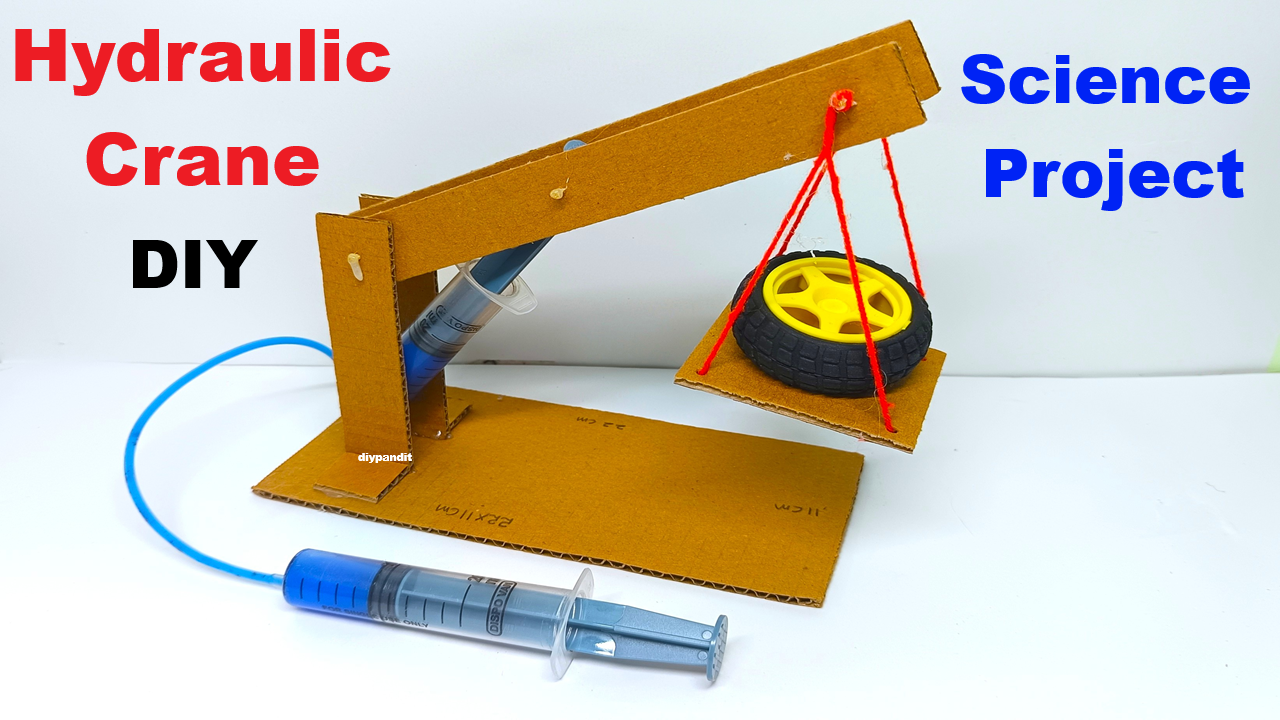Aim / Objective:
To demonstrate how hydraulic pressure can be used to lift and move heavy objects by transmitting force through a liquid using syringes and pipes.

Materials Required:
- 4–5 Plastic syringes (without needles)
- Flexible plastic tubes (to connect syringes)
- Wooden sticks, cardboard, or ice-cream sticks (for crane structure)
- Plastic cup or small container (for lifting load)
- Water (as the hydraulic fluid)
- Glue gun or strong adhesive
- Scissors, tape, and scale
Working Principle:
This model works on Pascal’s Law, which states that pressure applied to a confined fluid is transmitted equally in all directions.
When the piston of one syringe is pushed, it increases pressure in the liquid (water) inside the tube.
This pressure is transmitted to the other connected syringe, causing it to move and lift or lower the crane arm — showing how real hydraulic machines work.
Procedure:
- Build the crane structure using wooden or ice-cream sticks and fix it firmly on a base (cardboard or wood).
- Connect two or more syringes using flexible tubes filled with water (make sure no air bubbles remain).
- Attach one syringe (the control syringe) to the crane’s movable arm.
- When you push the control syringe, the connected syringe on the crane arm moves, lifting the small container or object.
- Pulling back the syringe brings the crane arm down again.
Observation:
When pressure is applied to one syringe, the connected syringe moves in response — lifting the attached load.
This demonstrates that pressure applied to a liquid is transmitted equally throughout the fluid, enabling the lifting action.
Conclusion:
The hydraulic crane model demonstrates the principle of hydraulics and Pascal’s Law effectively.
It shows how liquids can transmit force and are used in machines like cranes, car brakes, and hydraulic lifts to move or lift heavy loads with minimal effort.

